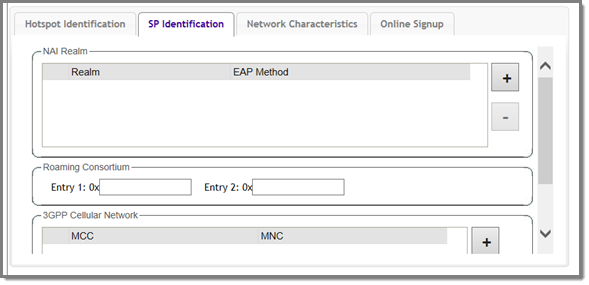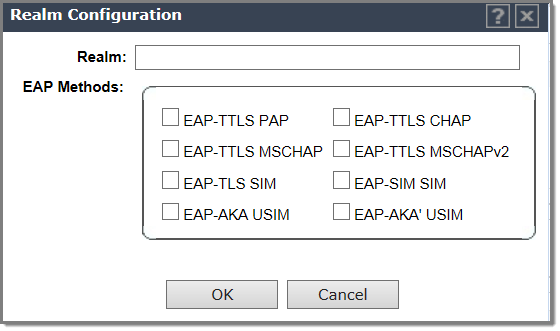To configure SP Identification for the hotspot:

NAI Realm. The the NAI (Network Access Identification) Realms list is a FQDN of the service provider. This is a list of realms that can be successfully authenticated. Each realm may have up to 8 supported EAP methods. Click the plus sign to add realms and select the EAP Method. Then, click OK.
If the device has been provisioned with the home service provider, the device does not need to use the EAP methods in the NAI Realm List. The mobile device knows the EAP method required to authenticate against its home service provider and automatically uses it.

Note
Keep your DNS server records up to date so that mobile devices can resolve the server domain names (FQDN).
Mobile devices with a SIM or USIM credential, can obtain a realm from the hotspot NAI Realm list. While 3GPP credentials are usually used to access a hotspot, a targeted NAI home query is an efficient alternative approach. The device's connection manager compares the realm information in the list to the information that is stored on the device. The connection manager uses the mobile device‘s preconfigured user preferences and policy to make a decision between a hotspot AP or a non-hotspot AP, if both are available.
Roaming Consortium.To configure authentication of mobile devices to the members of a roaming consortium, or to a particular SP that has a roaming consortium, add the appropriate IEEE-assigned Organizational Identifier (OI) here. Specify two identifiers unique to the organization that are part of the MAC address.
Use roaming consortium authentication when you do not know all the authenticated realms. Using identifiers unique to the organization in the beacon is a battery efficient roaming method because there are no ANQP queries needed.
